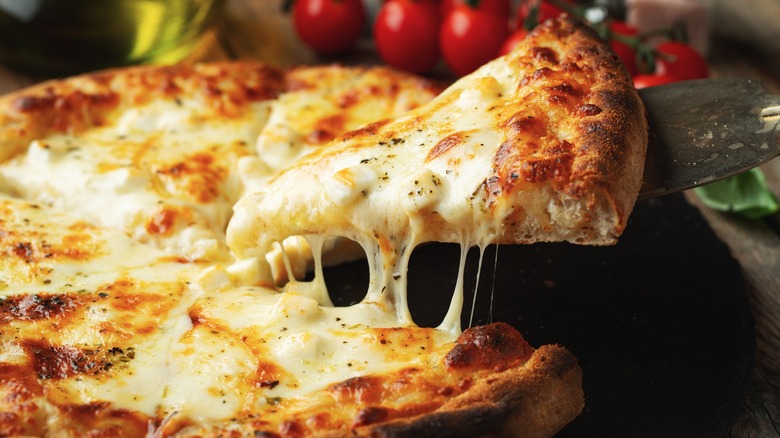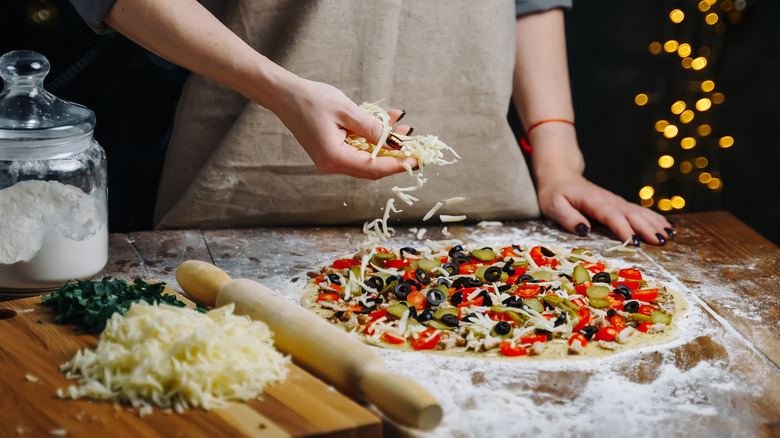The Mozzarella Cheese Mistake You're Probably Making With Pizza
While ordering pizza or going out for pizza is one of life's great pleasures, there's something really wonderful about making it at home. It's a fun activity if you have little ones and everyone gets to pick their toppings. If making your pizza dough or sauce from scratch is intimidating, there are plenty of wonderful store-bought options. One of the most vital choices you might make, however, is picking which cheese to use on top.
Not every mozzarella is created equal and if you chose the wrong one, you could be making a mistake that will have devastating consequences for your pie. While fresh mozzarellas like fior di latte or buffalo mozzarella offer a wonderful flavor, they release a lot of water when melting and often brown too quickly. A better option for pizza would be a low-moisture mozzarella, which comes in blocks or pre-shredded in a bag.
Low-moisture mozzarellas will keep your pizza from getting soggy, but there are other factors to consider like fat content. Full-fat mozzarella melts better and part-skim mozzarella browns more quickly. So what's a pizza maker to do?
Heat is also important
When making pizzas, low-moisture, full-fat mozzarella is your best friend, but not everyone likes or prefers that option. If you are using part-skim cheese for health reasons or like fresh mozzarella for flavor, you need to cook your pizza for less time at a higher temperature. Professional pizza makers aim for an 800-degree Fahrenheit pizza oven temperature, so if you're making pizza at home, crank up the temperature to between 400 and 450 degrees Fahrenheit.
You may also want to consider using a pizza stone as this will hold the heat better than a pan. A pizza stone will also give you the desired crust texture you want, which is crispy on the outside, and soft but cooked all the way through on the inside. If you choose to bake a pizza at a lower temperature, definitely use low-moisture, full-fat cheese to give yourself more time to cook the dough without over-browning your cheese.
One more word of warning: When using a low-moisture mozzarella, consider grating it yourself as pre-shredded options are often mixed with anti-caking chemicals that can get in the way of the cheese's ability to melt. When it comes to choosing the right mozzarella, have fun experimenting and seeing which you like best. But no matter what, try to keep that heat high when cooking your pizza.

